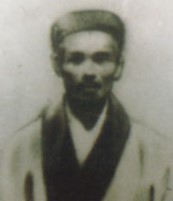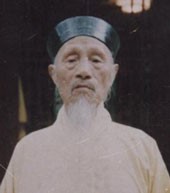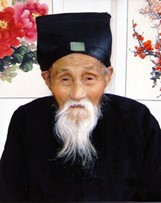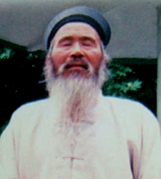Wudang Mountain is located in Hubei Province, near Shiyan City. Also known as Taihe Mountain it is one of the most famous Daoist holy mountains in China. The first temples were built in the Tang Dynasty (618-907) but it was in the Ming Dynasty, in honour of Zhenwu (真武) a complete complex of development was undertaken in Wudang which includes many temples and infrastructure. In Yong Le Period of Ming Dynasty (1413) the emperor Zhu Di, ordered the start of the big construction project in Mt. Wudang. Since the third Ming Emperor, Zhu Di, claimed the help of Zhen Wu in his war to take over the Ming Empire, monasteries were built under the Imperial Decree in Wudang Mountains, in China’s Hubei Province, where he allegedly attained immortality.
As one of the sacred mountains of Daoism, Wudang has since the Ming dynasty been reverred by Daoists and is also home to the Wudang traditional chinese martial arts.
Brief Overview of Daoism in relation to Wudang
By the beginning of the Tang Dynasty in 618, the term ‘Celestial Master’ had lost the potency it had in earlier movements such as the Five Pecks of Rice, and any prominent Daoist could be accorded the title. Emperor Xuanzong (712-756), canonized the first Celestial Master Zhang Daoling during his reign. This did not benefit the original territory of his followers in Sichuan, but rather benefited a temple in the Jiangnan area of Jiangxi province. This temple, located at Longhu Shan, claimed to be the spot where Zhang Daoling had obtained the Dao, and where his descendants still lived. Recognized by the emperor as the legitimate descendants of Zhang Daoling, these new Celestial Masters established a new patriarchy at their base of Longhu Shan (龙虎山, Dragon and Tiger Mountain).
The importance of the Zhengyi school grew during the Song Dynasty, with the Celestial masters frequently receiving imperial appointments. In 1239, the Southern Song Emperor Lizong commanded the thirty-fifth Celestial Master Zhang Keda to the united Lingbao School, the Shangqing School and Zhengyi Dao. The new school was to retain the Zhengyi name and remain based at Longhu Shan.
Shortly after the schools were united, Kubilai Khan conquered the Southern Song Dynasty to usher in the Yuan Dynasty. He accepted the claim that the Celestial Master of Longhu Shan was descended from Zhang Daoling and granted the school the right to control affairs relating to Daoism in the Jiangnan area. In 1304, as a result of Zhengyi Dao’s increased importance under the Mongols, all of the Daoist schools, with the exception of the Quanzhen School, were united under the banner of the Zhengyi School, with the thirty-eighth Celestial Master, Zhang Yucai as leader.
Quanzhen Pai (全真派)
According to traditional legend, Wang Chong met two Taoist immortals in the summer of 1159 C.E. The immortals, Zhongli Quan and Lü Dongbin taught him Taoist beliefs and trained him in secret rituals. The meeting proved deeply influential, and roughly a year later in 1160 C.E., Wang met one of these men again. In this second encounter, he was provided with a set of five written instructions which led to his decision of living by himself in a grave he created for himself in Zhongnan Mountain for three years.other four in a hut he later called “Complete Perfection Hut”), Wang met two of his seven future disciples, Tan Chuduan and Qiu Chuji. In 1167 C.E., Wang traveled to Shandong Province and met Ma Yu and Ma’s wife Sun Bu’er who became his students. These and others would become part of the seven Quanzhen disciples, who were later known as the Seven Masters of Quanzhen.
- Ma Yu (馬鈺): Yuxian lineage (Meeting the Immortals, 遇仙派)
- Tan Chuduan (譚處端): Nanwu lineage (Southern Void, 南无派)
- Liu Chuxuan (劉處玄): Suishan lineage (Mount Sui, 随山派)
- Qiu Chuji (丘處機): Longmen lineage (Dragon Gate Taoism, 龙门派)
- Wang Chuyi (王處一): Yushan lineage (Mount Yu, 崳山派)
- Hao Datong (郝大通): Huashan lineage (Mount Hua, 华山派)
- Sun Bu’er (孫不二): Qingjing lineage (Purity and Tranquility Sect, 清静派)
After Wang’s departure, it was left to his disciples to continue expounding the Quanzhen beliefs. Ma Yu succeeded Wang as head of the school, while Sun Bu’er went on to establish the Purity and Tranquility School, one of the foremost branches of Quanzhen.
Another notable disciple of Wang was Qiu Chuji who founded the famous White Cloud Monastery in Beijing. Qiu Chuji was the founder of the school called Dragon Gate Taoism (龙门派). Qiu was on good terms with the Mongol monarch Genghis Khan who put him in charge of religious affairs in Mongol-controlled China. As a result, the Quanzhen School of Taoism continued to flourish long after Wang’s death, right through to the present.
The Quanzhen school also follow some Buddhist (禅, Chan) ideas and take the heart sutra as an extension or complement to the the Daodejing. Although by empirical edict initially but also independently they absorbed the Buddhist pantheon into its worship and alchemy too. Quanzhen also accepted immortality as a spiritual idea and not as an actual physical ever -lasting life, as was considered by other daoist schools.
Wudang Mountain
Wudang Mountain is located in Hubei Province, near Shiyan City. Also known as Taihe Mountain it is one of the most famous Daoist holy mountains in China. The first temples were built in the Tang Dynasty (618-907) but it was in the Ming Dynasty, in honour of Zhenwu (真武) a complete complex of development was undertaken in Wudang which includes many temples and infrastructure. In Yong Le Period of Ming Dynasty (1413) the emperor Zhu Di, ordered the start of the big construction project in Mt. Wudang. Since the third Ming Emperor, Zhu Di, claimed the help of Zhen Wu in his war to take over the Ming Empire, monasteries were built under the Imperial Decree in Wudang Mountains, in China’s Hubei Province, where he allegedly attained immortality
Some of the key Schools of Daoism at Wudang Mountain include:
Wudang Quanzhen School (武当全真派)
In 1275, Wang Si Zhen from the Quanzhen school of Daoism came and lodged in Five Dragon temple on Wudang mountain to teach the ideas of the sect and his disciples once reached more than 100.
Wudang Zhengyi School (武当正一道)
In 1304, then famous Taoist Zhang Yu Cai became the headmaster of this school and in fact control the affairs related to Longhu Shan (Dragon and Tiger mountain), Gezhao Shan (Gezhao Mountain) and Mao Shan (Mao Mountain). Zhang Yu Qing, a Daoist from the Zheng Yi sect, acted upon the order and called more than four hundred of Taoists from nearby provinces and brought them to Mt. Wudang. Among them around 20 were assigned with important posts in the many Wudang temples.
Wudang Qingxu School (武当清虚派)
Zhang Shou Qing whom descended from both the Shangqing and Quanzhen schools of Daoism, stayed in Mt. Wudang for more than 20 years and his disciples reached 4,000 and in middle Yuan Dynasty many Taoists in Purple Heaven Palace and Grand Harmony and other temples were his disciples.
Wudang Longmen School (武当龙门派)
In 1669 Wang Chang Yue, successor of the Quanzhen Longmen School, after the establishment of the Qing dynasty journeyed southward with his disciples from Beijing and set up alter to offer his teachings in Yu Xu Temple in Wudang. Since then the Longmen School has became the mainstream of Wudang Daoism and even more popular than Zhengyi school until today.
The Martial Arts Legacy of Wudang
There is not one clear lineage or branch of Wudang Boxing, since what is currently known is most often a collection of many teachings. Those which are of a single line are often a branch off from a larger division of practice and contain but a part of the whole. In the last 100 years much effort has been placed in the sharing and alignment of martial practices which has resulted in a re-compilation of the Wudang materials. Noting that this meant ancient methods where grouped together as opposed to the creation of new things. The respective influences of the Wudang methods of the Taiping Institute can be found in the methodology section. Thus all the practices are deeply rooted in the heart of Wudang Boxing. Below we outline not all (as it is virtually impossible) but some of the most influential lineages and the practitioners to which we owe much for the practices today.

Wudang Master – Xu Benshan (徐本善, 1860-1932)
Xu Benshan was born in Ba County, Henan Province. 15th generation of Quanzhen Longmen Pai (全真龙门派) , Complete Perfection Dragon Gate Lineage/School). Since young he was educated in the confucian classics and also studied chinese medicine and the rudiments of chinese martial arts. His father had taken to visit Wudang when he was a boy and many years later when he was 20 years old he entered Wudang and became a disciple under Daoist Masters Wang Fumiao and Liu Fubao. For many years he studied the classics of Daoism, medicine and Wudang martial arts.
There are many stories about Xu Benshan. In 1929, Fu Jianqiu (a well known Xing Yi and Bagua Master) along with his disciple, Pei Xirong travelled on the advise of Wudang sword Master Li Jinglin to Wudang. There they met Daoist Abbot Xu Benshan and studied Wudang martial arts under Master Xu. Another well known story happened in 1931. When General He Long led the Third Red Army to withdraw from the Honghu Lake area and strategically re-positioned the soldiers towards the northwestern area of Hubei Province. He entered Wudang Shan through Yunyang. Xu Benshan who was in charge of Daoism in Wudang at the time, received the Red Army who stayed in one of the halls of Zixiao Gong. Xu Benshan also organised for treatment of injured soldiers which gave the general a lasting impression. As a result General He became a student under Master Xu and for several months practiced martial arts afterwhich he successfully defeated the 51st army of the Guomingtang. After the establishment of the People’s republic, General He sent officials to ensure the conditions and safety of the Daoist priests at Wudang.
Master Xu Benshan was known as the most important figure in Wudang boxing in the early 20th century and contributed greatly to the traditiona martial arts of Wudang. Although he taught many visitors aspects of his martial arts, some of his students included Hu Hezhen (胡合贞), Liu Lishan (刘理山), Wang Lixue (王理学), Liang Heqi (梁合启), Leng Hebin (冷合斌), Shui Heyi (水合一), Duan Heyan (段合烟), Xu Kaixian (), Li Helin (李合林), Li Heqi (李合起) and Fu Heshan. Since in most cases Master Xu only taught aspects of his knowledge, there are limited inheritors of his comperehensive Wudang martial arts.

Northern Wudang Master – Kuang Changxiu (匡常修,1905-1993 )
Kuang Changxiu was born in Jiao County, Shandong Province. Since he was eight years he commenced the study of traditional chinese martial arts (Bafan Quan/Erlangquan and Ditang Quan) and medicine. In his younger years he married and practiced both as a doctor, small business as well as teaching martial arts. In 1930. his wife died and combined with the political and social situation at the time was difficult he left when he was 29 years of age to Laoshan’s White cloud cave (白云洞) which was a part of the Daoist Quanzhen Jinshan Pai (全真金山派, Complete Truth – Golden Mountain Lineage/School), that was started by Sun Xuanqing in the Ming Dynasty. Sun Xuanqing was originally a Daoist priest from the Quanzhen Longmen (Complete Truth Dragon Gate) school.
Kuang Changxiu became a disciple under Daoist Master Kuang Zhenjue (匡真觉), who had studied with Wudang Pai Daoist Li Shina (李是卿). He studied the Wudang internal arts which focused on key three stages – Xuan Gong, Xuan Zhen and Xuan Hua which progressed from more external harder methods, to gentler softer methods. There were also many combat development methods like Dui Da (Combined Strikes), Jie Da (Intercepting Strikes), Zhuan Da (Turning Strikes) and Lian Da (Linked Strikes) as examples. Famous for his Leg work (kicking methods) and often nicknamed “Kuang Fei Tui” (Flying Kicks Kuang).
For over 30 years thereafter he studied and travelled to various Daoist centres as a Daoist and enhanced his knowledge of both Daoism, Qigong, Martial arts and medicine. In 1980 he returned to Taiqing Palace on Laoshan where he actively taught many students.

Northern Wudang Master – Liu Chengxi (刘诚喜, 1910 – 2008)
Liu Chengxi was born in Fengran district of Tangshan County, Hebei Province. He became ordained at 20 years of age at the Jiulong Guan (Nine Dragon Temple) as 24th Generation of Quanzhen Longmen Pai under the tutelage of Zhang Zongcheng who was renowned for his martial skills and health cultivation methods. M. Liu later travelled around the country. He held various posts such as managing the Laojun Hall on Qingliangshan in Hu County, Shanxi and also as the representative of the (Wang) Chongyang Palace in Shanxi.
During the cultural revolution he became a recluse for many years in the caves of the Tongbai Mountains. He had a number of talents including martial arts, Internal Alchemy, Chinese Herbal Medicine and so forth. In terms of martial arts, the skills passed on by Liu Chengxi include Xuanwu Quan, Longmen Baguazhang, San Yuan Zhang and Taijiquan. M. Liu had many students including Zhao Xinhui 赵信慧、Zhao Xindao 赵信道、Yang Xincai 杨信才、Zheng Xinlian 郑信莲、Jiao Xinzhen 焦信真、Duan Xinyuan 段信元、Ye Xingqing 叶信庆、Zheng Xinyi 郑信义、Sun Xinxuan 孙信玄、Wu Xinming 吴信明、Wang Xinrong 王信荣、He Xingui 何信贵、Qiu Xinde 邱信德、Li Xinzhong 李信中 and many others.
One of his students Zhao Xindao 赵信道, was invited to Wudang to return some boxing methods to the local trainees. Zhao taught the Xuanwu Quan practice which is now carried on by the various local trainees and their new schools (such as Sanfeng Pai or Xuanwu Pai).

Southern Wudang Master – Guo Gaoyi (郭高一, 1921 – 1996)
Guo Gaoyi was born in Shangqiu, Henan Province. As a child he practiced the rudiments of Erlang Quan and Shaolin Quan. He later participated in the War of Resistance Against Japan (抗日战争, 1937-1945) and was fortunate to get to know Taijquan experts at the time, Yang Kuishan and Guo Yingshan. After the failure of the resistance, Guo stayed at the Lu Mt Daoist Sanctuary, where Yang Mingzhen, an inheritor of the Wudang Sanfeng Ziran Pai school taught Wudang Sanfeng Taijiquan and other Internal boxing methods. He returned to his hometown in Shangqiu afterwards.
In 1981 at the Tongbai Mt in Henan Province he was further ordained as a Daoist under Priest Tang Zhongliang. Master Tang Zhongliang was 26th Generation of the Wudang Long Men (Dragon Gate division), who originally was from Ying Shang County in An Hui Province and at the age of 29, he travelled to Wudang Mountain where at the Golden Peak became a disciple of Wang Xintang (王信堂, 25th Generation of the Long Men Division), studying Taijiquan.Whilst in Wudang, Master Tang also recieved instructions from Venerable Wudang Priest Xu Benshan.In his latter years Master Tang went into retreat at Tongbai Mt. in Henan Province.
In 1984, Master Guo Gaoyi was assigned by the Wudang Mountain Daoist Association to become a Martial Arts Coach at Wudang Mountain. Together with Daoist Master Zhu Chengde (1898-1990) they imparted the skills of Wudang Traditional Martial arts during the time on Wudang.
Taiping Wudang Boxing Curriculum
The methods of Wudang Boxing are many and varied, each with their own basic practices, internal development (Neigong) and respective boxing/weapons techniques. After many years of continually seeking out teachers of these rare arts in China, below are the methods that we have inherited as Traditional Wudang Boxing. Although all from different times, sources and generations, they all are representative and symbolic of Wudang’s martial arts legacy.
Wudang Laoshan Boxing (崂山金派拳法)
Xuan Gong Quan (崂山玄功拳 Mystical Skills Boxing)These methods are descended from the teachings of Daoist Priest – Master Kuang Changxiu, also known as Flying Kicks Kuang, he was a renowned practitioner of the Northern Wudang Boxing School, which was propagated on Lao Shan (Lao Mountain) in Shandong Province.
- Xuan Gong Quan (崂山玄功拳 Mystical Skill Boxing)
- Xuan Zhen Quan (崂山玄真拳 Mystical Truth Boxing)
- Xuan Hua Quan (崂山玄化拳 Mystical Transformational Boxing)
- Long Hua Quan (崂山龙华拳 Dragon Transforming Boxing)
- Long Hua Jian (崂山龙化剑 Dragon Transforming Sword)
Wudang Taiyi Jiu Gong Quan (武当太乙九宫拳)
Wudang Jiugong Quan (九宫掌) descends from a Daoist named Zhang Shouxing (张守性) who lived in the Hongzhi period of the Ming Dynasty (1488-1505 CE). Zhang is a prominent figure in Wudang martial arts, he was the 8th generation lineage holder of the Longmen Pai (Dragon Gate Sect 龙门派) and resided in the venerated Purple Cloud Temple on Wudang Mountain (Wudangshan Zixiao Gong 武当山紫霄宫). Zhang Shouxing practiced Xuanmen Zhang (玄门掌) was allegedly based on a combination of the essence of “Old 13 Postures Taiji”, “Hua Tuo’s 5 Animal Play Qigong”, some Daoist Daoyin (a Daoist system of exercises) practices and fighting techniques.
In the Qing Dynasty around 1848, a man from Xiangxiang, Hunan (湖南湘乡), Xie Jingwu (谢敬武), was living as a hermit on Bai Shifeng (白石峰 – this is a southern peak of Heng Mountain 衡山). During his seclusion, Xie learned Jiugong Quan in a Daoist temple. When he returned to Xiangxiang, he passed it to his son, Xie Weida (谢为大) who had a number of students including his son,Xie Defan (谢迪凡) and He Chunsheng (何春生). Wang Bingsheng (王炳生, 1934-) is the grandson (materinal) of M. He and taught in Wuhan.
Taiyi Wuxing Quan (太乙五行拳) “Wudang Taiyi Qin Pu 23 Shi” (武当太乙擒扑二十三势), this set of Wudang Practice was practiced and popularized by Aisin Gioro Pu Xuan, who studied at Zi Xiao Gong (Purple Palace) and was taught by Daoist Priest Li Helin (李合林, 16th Generation of Wudang Long Men Division, disciple of Xu Benshan). It is also said that the set was created by 8th Generation Wudang Long Men Master Zhang Shouxing (张守性).These were passed on by Master Zhao Jianying (Disciple of Jin Zitao (Aisin Gioro Pu Xuan).
- Jiugong Xuanzhuan Shier Zhuang Fa (九宫旋转十二桩法 9 Palaces Turning 12 post methods)
- Taiyi Wuxing Quan (太乙五行拳 Supreme Divinity 5 Phases Boxing)
- Jiugong Zhang (九宫掌 9 Palaces Palms)
- Jiugong Tui (九宫腿 Nine Palaces Kicks)
- Guaizhang Jian (拐仗剑 Cane Sword)
- Zi Dian Jian (紫殿剑 Purple Palace Sword)
- Jiugong Jian (九宫剑 9 Palaces Sword)
- Bagua Qiang (九宫八卦枪 8 Trigrams Spear)

Wudang Sword (武当丹派剑法, Dan Pai Jian Fa)
In addition to its Daoist principles in boxing, Wudang is most renowned for its marvellous sword skills and the most representative is the Wudang Sword. Song Weiyi had taught seven disciples, of which Li Jinglin and Guo Qifeng were most known (7 Disciples were – Li Jing Lin 李景林, Guo Qi Feng 郭岐鳳, Chen Yu Kuan 陳玉寬, Liu Zhan Kui 劉占魁, Xiao Fengxiang 蕭鳳翔, Zhang De Zhun 張德君 and Liu Hai Yan 劉海晏). Taiping Wudang Sword is descendant from the teachings of Master Li Jinglin (李景林, 1885-1931) nicknamed “China’s First Sword” and “God of the Sword.”) through his disciples Chu Guiting, Yang Kuishan and Meng Xiaofeng. The Xuanmen sword is a recent addition to the curriculum from the Zhong Yunlong Sanfeng Pai group.
- Wudang Xuan Jian (武当玄剑 Wudang Mysterious Sword)
- Wudang Dan Jian (武当丹剑, Wudang Single Sword)
- Wudang Xing Jian (武当行剑 Wudang Continuous Stepping Sword)
- Wudang Dui Jian (武当对剑 Wudang 2 Man Dual Sword)
- Wudang Wu Jian (武当舞剑 Wudang Free Style Sword)

Wudang Longmen Pai Quan Fa (武当龙门拳法)
Master Xu Benshan was one of the most representative masters of Wudang Boxing in the 21st cenutry. His disciples had all studied many different aspects of his skills. In 1927, Wudang sword M Li Jinglin invited Xingyi expert Fu Jianqiu to visit Wudang mountain along with his disciple Pei Xirong. Fu & Pei met with 15th generation Quanzhen Long Men (Compete Reality Dragon Gate) M Xu Benshan, they were deeply impressed and became disciples under M Xu studying many different skills including Wudang Nei Gong, Chunyang Sword, Qianku Ball, Long Men Spear, Xuanzhen Staff and other methods remaining in Wudang for a number of months. In this way the methods that would otherwise be lost were passed on to our generation today as Fu Jianqiu and Pei Xirong taught their students in Shanghai and Suzhou. M. Liu was also of the Longmen style and contributed a number of boxing methods as well. These practices are predominantly from students/descendants of Xu Benshan and Liu Chengxi.
- Tai He Quan (太和拳 Tai He Boxing)
- San Hui Zhuan (三回转 3 Returning Turns)
- San Yuan Zhang (三元掌 3 Primary Palms)
- 108 Wudang Taijiquan (徐本善氏武当太极拳)
- Xuanwu Quan (武当玄武拳)
- Qiankun Qiu (乾坤球)
- 33 Longmen Taijiquan (33式武当太极拳)
- Longmen Dragon Shape Baguazhang (龙门龙形八卦掌)
- Long Men Qiang (龙门枪 Dragon Gate Spear)
- Zhen Wu Gun (真武棍 Zhen Wu Staff)
- Tai He Jian (太和剑 Tai He Sword)

Guo Gaoyi was said to have practiced Taijiquan with Tang Zhongliang who learnt some taijiquan with Yang Kuishan (a disciple of GM Li Jinglin). His Taijiquan was referred to as Wudang Dan Pai Taijiquan (since GM Li’s famed Wudang Sword was Dan Pai). However Li Jinglin studied Yang Style Taijiquan with Yang Jianhou (son of Yang Lu’chan, founder of Yang Style Taijiquan) and was also close friends with Yang Jianhou’s son, Yang Chengfu (1883-1936). There are three key sets of practice developed by Guo Gaoyi and his disciple, Zhong Yunlong.
- Wudang Taijiquan – 28 (28式武当太极拳)
- Wudang Taijiquan – 108 (108式武当太极拳)
- Wudang Taijiquan – 13 postures (武当太极拳十三势)
- Wudang Taiji Sword (武当太极剑)
Wudang Chunyang Quan (武当纯阳拳)
In Wuhan (Wuchang), Hubei Province Master Liu Lihang (1906-2002) became a Daoist on Mt. Wudang in 1921, under the Daoist Priest Wang Zhidao (from Yu Xu Temple on Mt. Wudang). He later returned to Wuhan in 1935 and after a few years in 1937 he travelled to Sichuan. His disciples include Wang Zhaohui, Zhang Tianyi, Xu Guoyan, Zhang Jianzhun, Yang Guanghua, Ge Xiaohui, Qian Jianyi and many others.
- Jiu Zhuan Ba Bu Long Xin Zhang (九转八步龙心掌 9 Turns, 8 Step Dragon Heart Palm)
- Ba Bu Chun Yang (八步纯阳 8 Step Rising Sun)
- Wu Bu Chuan Xin Lian (五步穿心莲 5 Step Penetrating the Heart Lotus)
- Chun Yang Jian (纯阳剑 Pure Yang Sword)
Wudang Neigong (武当内功)
Most of these methods were passed on by Master Wei and Liu in 2002/2003 in Danjiangkou, who had studied with Daoist priests from Wudang. The emphasis is on spiritual and energy cultivation and not so much on direct martial techniques. These are considered advanced Wudang Neigong practice methods.
- Wudang Tian Gang Gong (天罡功 Heavenly Stems Energy Cultivation)
- Wudang Shen Jian Zi Fa (神剑字法 Spiritual Sword Character Method)
- Wudang Xuannv Gong Fa(Mysterious Girl Methods, 玄女功法)
- Wudang Hunyuan Qiu Da Fa (混元球大法 Primordial Ball Great Methods)
- Wudang Three heavenly Gates Qigong (三天门悟性气功)
- Ruyi Eight Treasures Zhuang ( 武当如意八宝桩)
